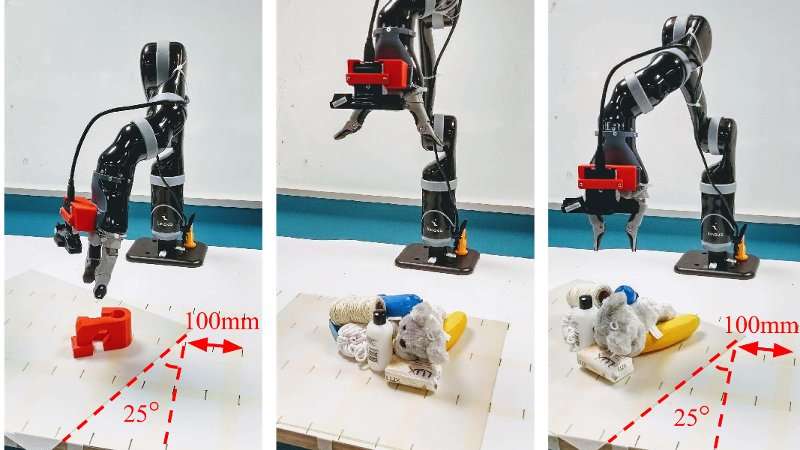
Credit: Queensland University of Technology
Roboticists have created a new method that allow robots to better grasp objects in cluttered and changing environments.
Researchers from the Queensland University of Technology (QUT) have developed a real-time, object-independent grasp synthesis method that enables robots to more accurately grasp objects in difficult situations that could be particularly useful for industrial use.
“We have been able to program robots, in very controlled environments, to pick up very specific items,” Jürgen Leitner, PhD, a postdoctoral research fellow, said in a statement. “However, one of the key shortcomings of current robotic grasping systems is the inability to quickly adapt to change, such as when an object gets moved.
“The world is not predictable-things change and move and get mixed up and, often, that happens without warning- so robots need to be able to adapt and work in very unstructured environments if we want them to be effective.”
The new approach is based on a Generative Grasping Convolutional Neural Network, where robots quickly scan the environment, mapping each pixel it captures to its grasp quality using a depth image.
“The Generative Grasping Convolutional Neural Network approach works by predicting the quality and pose of a two-fingered grasp at every pixel,” PhD researcher Douglas Morrison said in a statement. “By mapping what is in front of it using a depth image in a single pass, the robot doesn’t need to sample many different possible grasps before making a decision, avoiding long computing times.
“In our real-world tests, we achieved an 83 percent grasp success rate on a set of previously unseen objects with adversarial geometry and 88 percent on a set of household objects that were moved during the grasp attempt,” he added. “We also achieve 81 percent accuracy when grasping in dynamic clutter.”
Using the new method, the researchers can process images of the objects the robot views within about 20 milliseconds. The robot then updates its decision on where to grab the object with a much greater purpose, which is particularly important in cluttered spaces.
This ability could be important in increasing the usages for robots in industrial automation, as well as in domestic settings.
“This line of research enables us to use robotic systems not just in structured settings where the whole factory is built based on robotic capabilities,” Leitner said. “It also allows us to grasp objects in unstructured environments, where things are not perfectly planned and ordered, and robots are required to adapt to change.
“This has benefits for industry – from warehouses for online shopping and sorting, through to fruit picking,” he added. “It could also be applied in the home, as more intelligent robots are developed to not just vacuum or mop a floor, but also to pick items up and put them away.”
The team’s paper will be presented at the Robotics: Science and Systems international robotics conference at Carnegie Mellon University in Pittsburgh from June 26-30.




